| Listing 1 - 10 of 136 | << page >> |
Sort by
|
Book
ISBN: 1412369703 Year: 2010 Publisher: Chicoutimi : J.-M. Tremblay,
Abstract | Keywords | Export | Availability | Bookmark
 Loading...
Loading...Choose an application
- Reference Manager
- EndNote
- RefWorks (Direct export to RefWorks)
Cet article tente d'éclairer la situation contemporaine du Québec en matière d'immigration par un rappel historique de l'évolution des quelque quarante dernières années. On souligne le fait que l'intégration résolue et massive des immigrants à la communauté francophone du Québec est un phénomène nouveau, celui d'une seule génération. Suit une analyse de la colère publique qui s'est manifestée au Québec, surtout au cours de l'année 2007, sur la question des accommodements raisonnables. Un dérapage engendré par une distorsion perceptuelle. Enfin, différents modèles d'intégration sont confrontés et des propositions sont avancées. This article aims at shedding some light on Quebec's contemporary situation in matters of immigration. With a historical overview of the last forty years, it appears that a firm policy of massive integration of immigrants into the Francophone community is a new phenomenon, involving just one generation. Following is an analysis of the public anger that took place around 2007 on the issue of reasonable accommodations. This appears to correspond, in great part, to illfated misperceptions. Finally, different models of integration are confronted to Quebec's identity and some proposals are made.
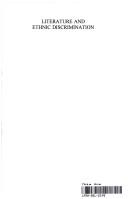
ISBN: 9004656502 9042002220 Year: 1997 Publisher: Amsterdam : BRILL,
Abstract | Keywords | Export | Availability | Bookmark
 Loading...
Loading...Choose an application
- Reference Manager
- EndNote
- RefWorks (Direct export to RefWorks)
Even though universities and colleges make a concerted effort to foster unity and worldwide acceptance of different ethnicities by including politically correct literature in their curriculums, their attempts to protect students from being exposed to texts that portray discrimination and exhibit racial insensitivity are futile and ill-advised. Texts that contain biases based on otherness continue to be written and those produced in the past remain relevant and still demand the attention of an audience of reader. In order to see the full picture of the world in which they live, students must face even that which is uncomfortable and disturbing. To think otherwise is to create and academic environment that is totally idealistic and distorts the fact that ethnic discrimination has been a potent reality in every society in history and remains so today. These studies in this volume allow readers to meet writers from the traditional American and European canon while also being exposed to third world writers whose work may be unfamiliar. They include memoirs of Holocaust survivors and even record the silencing of Italian women, Apartheid in South Africa and tribal conflict in Nigeria as well as transplanted Asian culture in Canada and the idolization of the black body in Japan. The collection permits a viewing of the ethnic 'other' not merely in a politically correct way in which one samples the differences and nods approvingly. Rather its intent is to offer opportunities for contemplative assessment of authorial motives and goals, thereby engendering a wealth of understanding based on active engagement rather than passive acceptance of the status quo.
Book
ISBN: 1438447701 9781438447704 1438447698 9781438447698 9781438447698 Year: 2013 Publisher: Albany : State University of New York Press,
Abstract | Keywords | Export | Availability | Bookmark
 Loading...
Loading...Choose an application
- Reference Manager
- EndNote
- RefWorks (Direct export to RefWorks)
Fifties Ethnicities brings together a variety of texts to explore what it meant to be American in the middle of "America's Century." In a series of comparative readings that draws on novels, television programs, movie magazines, and films, Tracy Floreani crosses generic boundaries to show how literature and mass media worked to mold concepts of ethnicity in the 1950s. Revisiting well-known novels of the period, such as Vladimir Nabokov's Lolita and Ralph Ellison's Invisible Man, as well as less-studied works, such as William Saroyan's Rock Wagram and C. Y. Lee's The Flower Drum Song (the original source of the more famous Rodgers and Hammerstein musical), Floreani investigates how the writing of ethnic identity called into question the ways in which signifiers of Americanness also inherently privileged whiteness. By putting these novels into conversation with popular media narratives such as I Love Lucy, the author offers an in-depth examination of the boundaries and possibilities for participating in American culture in an era that greatly influenced national ideas about identity. While midcentury mass media presented an undeniably engaging vision of American success, national belonging, and guidelines for cultural citizenship, Floreani argues that minority writers and artists were, at the same time, engaging that vision and implicitly participating in its construction.
Immigrants in literature. --- Ethnicity in literature. --- American fiction --- American literature --- History and criticism. --- Minority authors
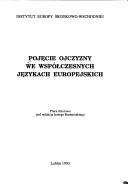
ISBN: 8385854088 Year: 1993 Publisher: Lublin : Instytut Europy Środkowo-Wschodniej,
Abstract | Keywords | Export | Availability | Bookmark
 Loading...
Loading...Choose an application
- Reference Manager
- EndNote
- RefWorks (Direct export to RefWorks)
Allegiance --- Ethnicity in literature --- Ethnicity --- Homeland in literature --- Patriotism in literature --- Patriotism
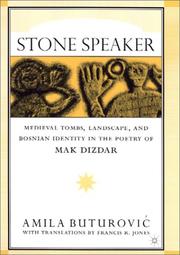
ISBN: 0312239467 Year: 2002 Publisher: Basingstoke : Palgrave,
Abstract | Keywords | Export | Availability | Bookmark
 Loading...
Loading...Choose an application
- Reference Manager
- EndNote
- RefWorks (Direct export to RefWorks)
The poet Mak Dizdar has become a cultural icon in contemporary Bosnia-Herzegovina. Inspired by the lapidary imagery and epitaphs of medieval Bosnian tombstones, his best-acclaimed collection of poetry, Stone Sleeper, reawakens the medieval voices in the historical imagination of contemporary Bosnians. Amila Buturovic looks at Stone Sleeper'srecovery of the ancestral world as an effort to refashion the sentiments of collective belonging. In treating the medieval tombstones as sites of collective memory, Dizdar's poetry evokes new possibilities for Bosnians to cast aside national differences based on religion and embrace a pluralistic identity rooted in the sacred landscape of medieval Bosnia. The book includes a bilingual appendix of Dizdar's poetry with an introduction by the translator, Francis Jones.
Ethnicity in literature. --- Dizdar, Mak --- Dizdar, Mak. --- Criticism and interpretation. --- Bosnia and Hercegovina --- In literature.
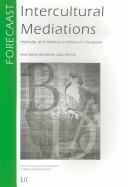
ISBN: 3825867382 Year: 2004 Publisher: Münster : Lit,
Abstract | Keywords | Export | Availability | Bookmark
 Loading...
Loading...Choose an application
- Reference Manager
- EndNote
- RefWorks (Direct export to RefWorks)
American fiction --- Ethnicity in literature. --- Race in literature. --- Mimesis in literature. --- History and criticism. --- Minority authors
Book
ISBN: 9789178447930 Year: 2010 Publisher: Hedemora : Gidlund,
Abstract | Keywords | Export | Availability | Bookmark
 Loading...
Loading...Choose an application
- Reference Manager
- EndNote
- RefWorks (Direct export to RefWorks)
Swedish literature --- Ethnicity in literature. --- Social classes in literature. --- History and criticism.
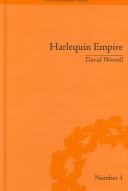
ISBN: 9781851968510 1851968512 Year: 2007 Publisher: London : Pickering & Chatto,
Abstract | Keywords | Export | Availability | Bookmark
 Loading...
Loading...Choose an application
- Reference Manager
- EndNote
- RefWorks (Direct export to RefWorks)
English drama --- Enlightenment --- Ethnicity in literature. --- Culture in literature. --- Aliens in literature. --- History and criticism
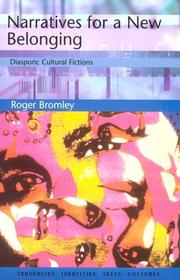
ISBN: 1474465420 0585443114 0748609512 Year: 2000 Publisher: Edinburgh University Press
Abstract | Keywords | Export | Availability | Bookmark
 Loading...
Loading...Choose an application
- Reference Manager
- EndNote
- RefWorks (Direct export to RefWorks)
Cultural fictions - texts written from the perspective of the edge - are the focus of this exciting and enlightening book. The author examines the formations of narratives of identity in contemporary 'borderline' fictions and films. The work of migrant and marginalised groups located at the boundaries of nations, cultures, classes, ethnicities, sexualities and genders, is explored through an intricate weaving of theory with textual analysis. Organised around the themes of memory, tradition and 'belonging', the book proposes the space of 'migrant' writing - an emerging third space - as one that challenges fixed assumptions about identity.The cross-cultural range - including texts from British, Caribbean, Chinese-American, Indo-Caribbean, Canadian, Cuban and Indian writers; the original discussion of authors such as Maxine Hong Kingston, Gloria Anzaldua, Amy Tan, Gish Jen, Hanif Kureishi and Chang-rae Lee; and engagement with the work of theorists including Bakhtin, Freud, Lyotard, de Certeau, Deleuze and Guattari, produces a significant contribution to the broadening definitions of ethnicity and the 'post-colonial'.Works explored include Jasmine, Borderlands, The Joy Luck Club, The Wedding Banquet, Dreaming in Cuban, My Year of Meat, Buddha of Suburbia and East is East. These contemporary texts and films will make this book accessible to a broad range of readers.
Book
ISBN: 9780415876988 0415876982 9780415876995 0415876990 9780203853139 020385313X 9781136981463 9781136981500 9781136981517 1136981500 9786612586712 1136981519 1282586718 Year: 2010 Publisher: New York: Routledge,
Abstract | Keywords | Export | Availability | Bookmark
 Loading...
Loading...Choose an application
- Reference Manager
- EndNote
- RefWorks (Direct export to RefWorks)
Young adult literature --- Ethnicity in literature --- Identity (Philosophical concept) in literature --- Characters and characteristics in literature --- Study and teaching --- Young adult literature - Study and teaching --- Young adult literature - Stories, plots, etc. --- Ethnicity in literature - Study and teaching
| Listing 1 - 10 of 136 | << page >> |
Sort by
|

 Search
Search Feedback
Feedback About UniCat
About UniCat  Help
Help News
News